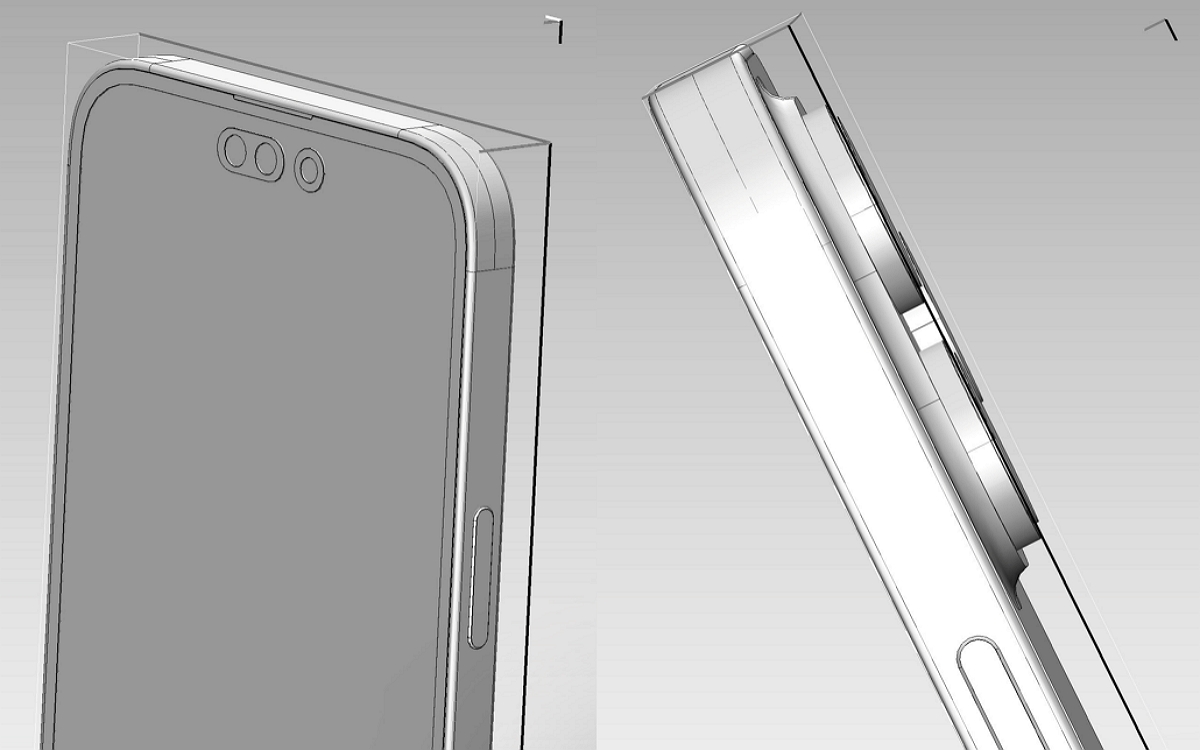
The iPhone 14 and 14 Pro Max look very different from the iPhone 14 in the photo, in particular thanks to the arrival of a new 48 MP sensor. This is the first time in several years that Apple will not use a 12 MP main sensor.
While their official presentation is not expected before the fall, we now know a little more about the iPhone 14 Pro and 14 Pro Max. Indeed, @VNchocoTaco has unveiled new 3D renders on Twitter that give us a better look at the dimensions of the smartphone.
According to them, the news pill at top of screen will be 7.15mm wide and punch will be 5.59mm in diameter. For comparison, the iPhone 13 Pro Max’s notch is 26.83mm wide. We are therefore dealing with a nice reduction in the space occupied by the selfie camera and the sensors for Face ID. We also learn that the iPhone 14 Pro Max would present smaller borders of 1.95 mm for its screencompared to the 2.42mm bezels of the 13 Pro Max.
The 48 MP sensor is revealed before its time
In addition to the dimensions of the new screen elements, a leaker named “Fishing 8” revealed on his Weibo account a long list of technical characteristics of the main sensor of Apple’s next flagship that will allow it to film in 8K, a first. on an iPhone.
According to his information, the 48 MP sensor in the iPhone 14 Pro and iPhone 14 Pro Max will be 1/1.3 inch in size. This is equivalent to 21% larger sensor surface than the 1/1.65 inch sensor present in the iPhone 13 Pro and iPhone 13 Pro Max, and corresponds to the estimates made by analyst Ming-Chi Kuo a few weeks ago. With a size of 1/1.3 inch, the sensor would be as big as the Google Pixel 6’s 50MP sensor, or the Galaxy S22 Ultra’s 108MP sensor.
However, due to the increased number of megapixels, iPhone 14 Pro camera pixels will be smaller, allegedly measuring 1.22µm. This is a reduction of 0.68µm compared to the iPhone 13 Pro and iPhone 13 Pro Max. However, it is expected that the sensor will use pixel-binning technology to artificially increase the size of its pixels and thus capture 12 MP shots. We would then obtain huge pixels of 2.44 µm which could significantly improve performance in low light conditions.
Source: Weibo



